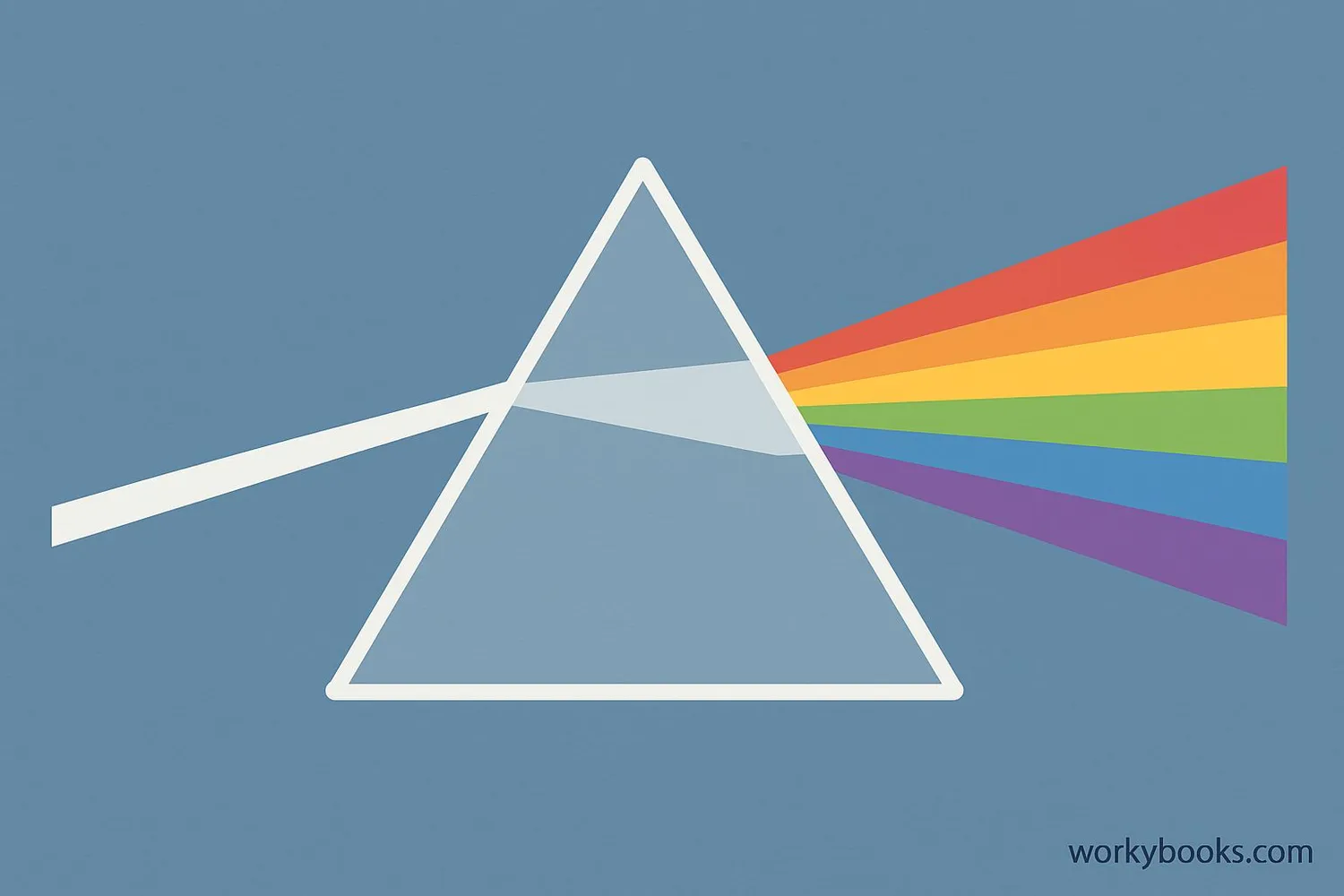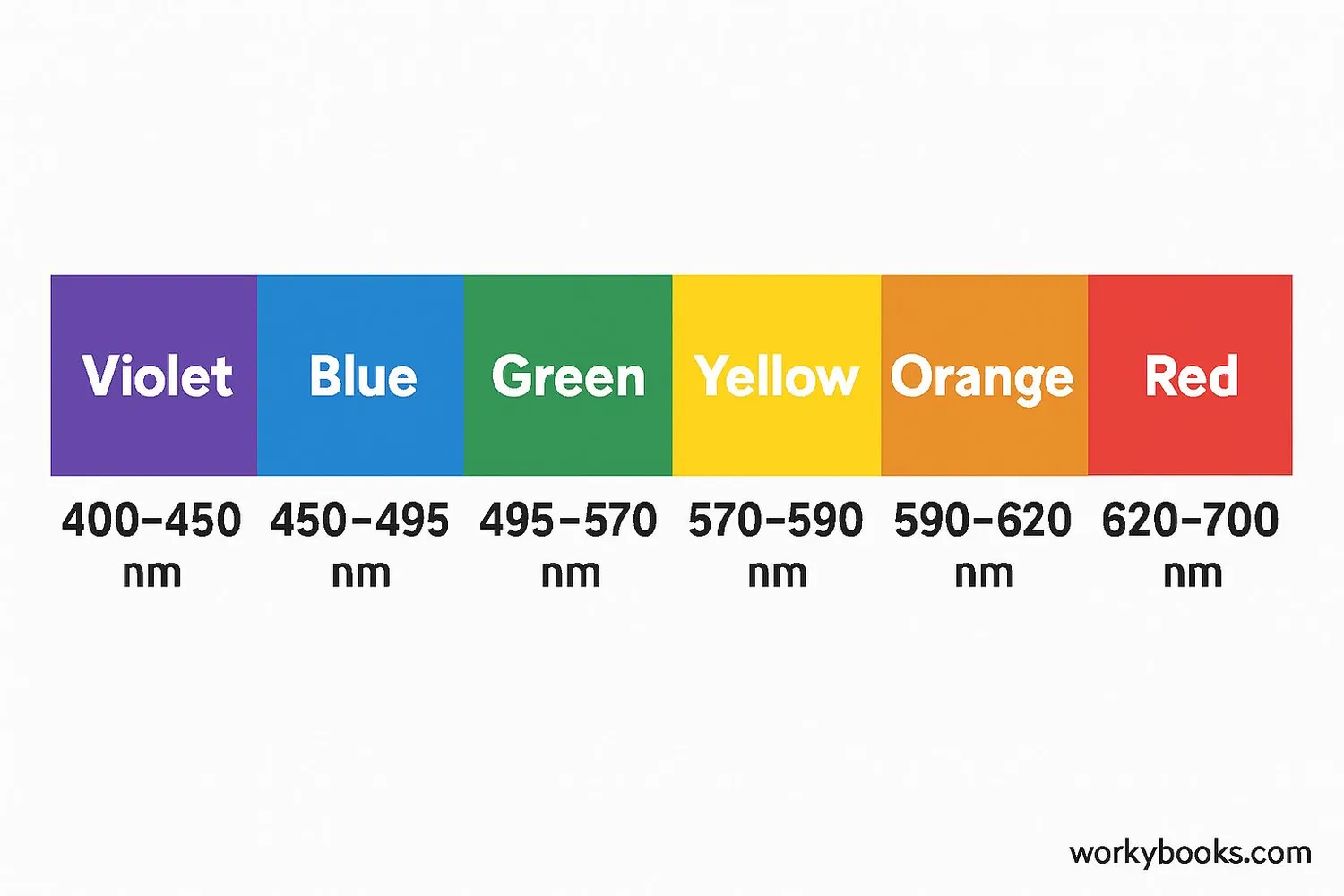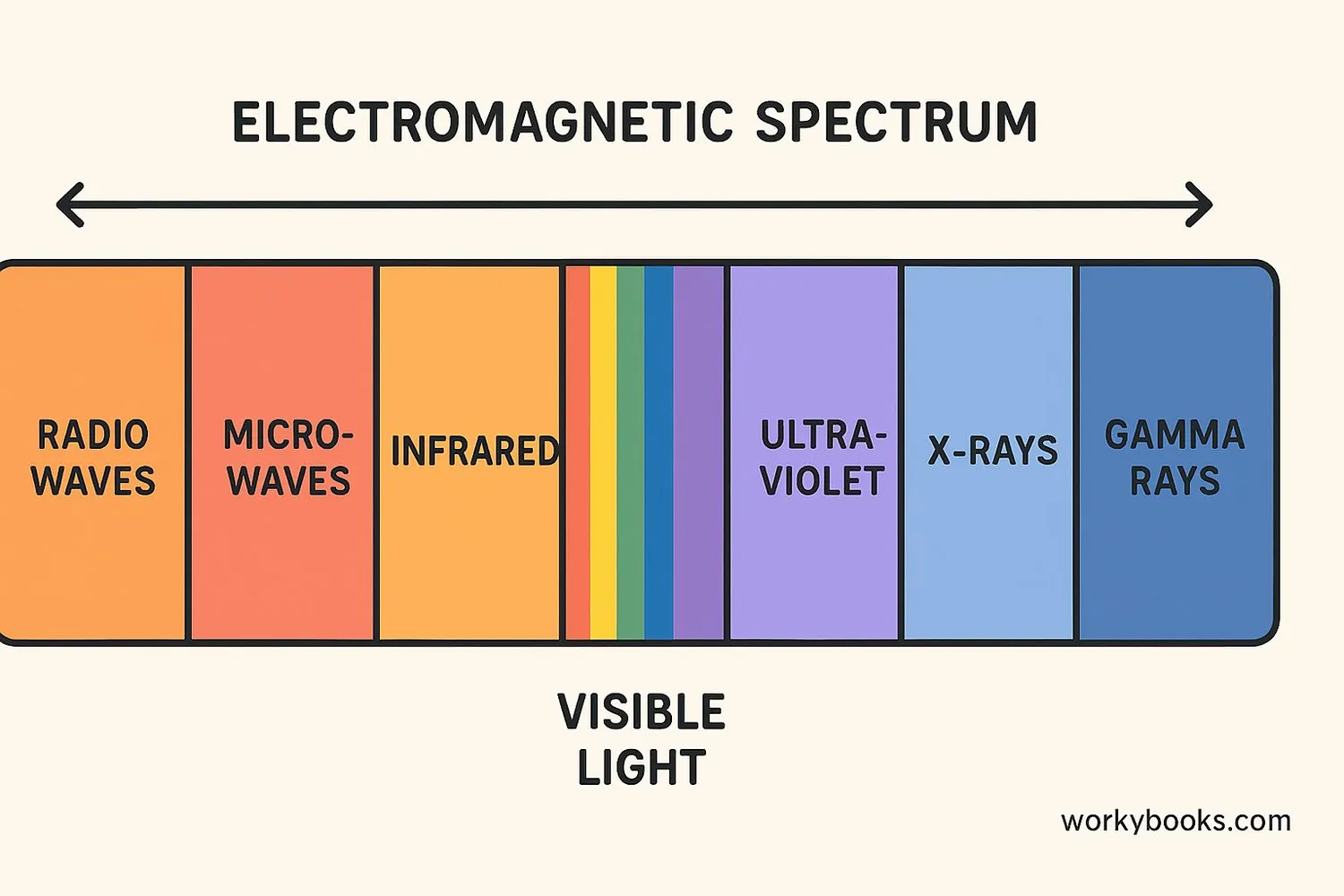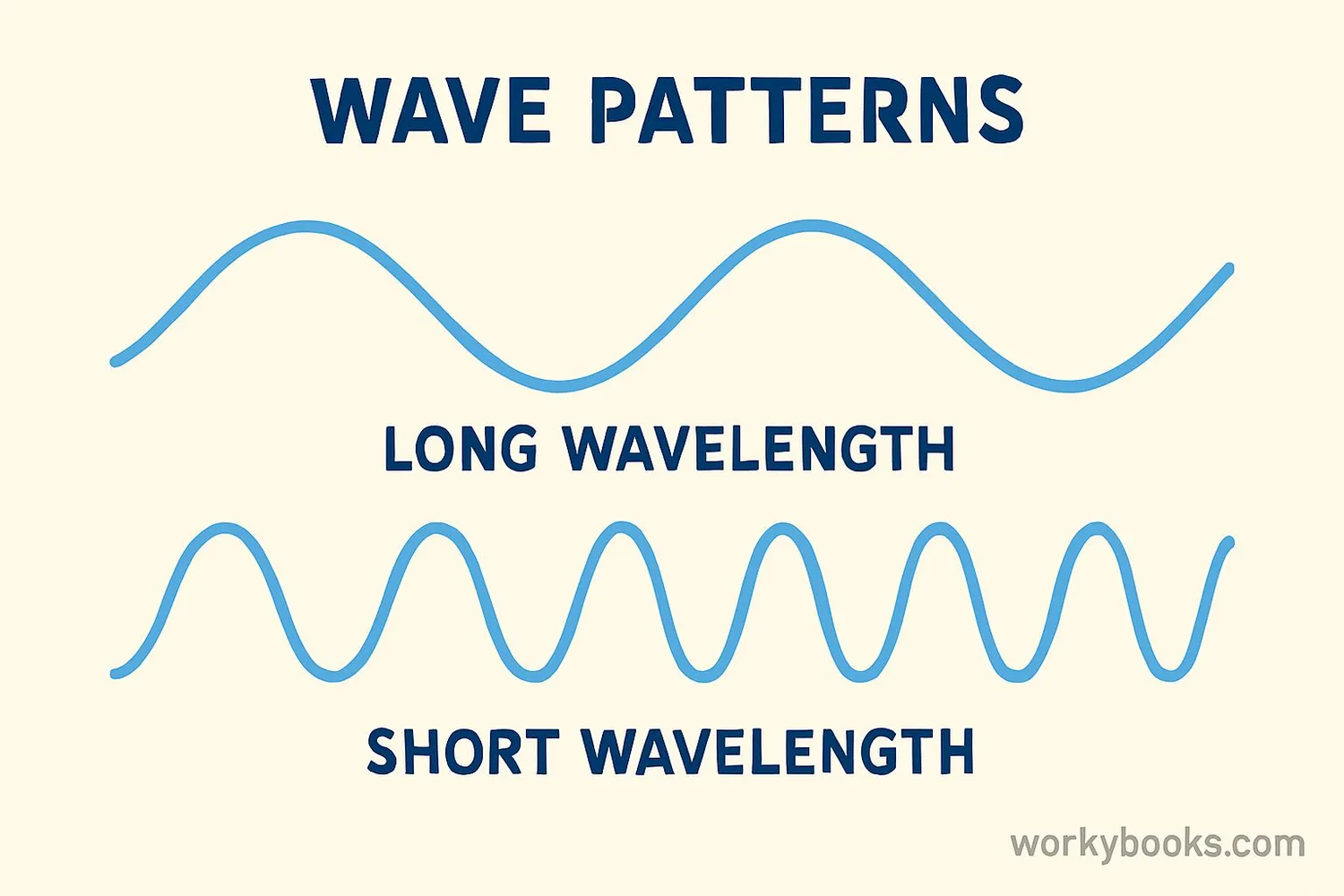Light Spectrum - Definition, Examples, Quiz, FAQ, Trivia
Discover the colors of light and how they create the world we see!
What is Light Spectrum?

The light spectrum is the range of all types of light energy that exist! When we talk about the light spectrum, we're describing how light can be organized by its wavelength and frequency.
Think of light like music. Just as musical notes have different pitches (high and low), light has different "colors" based on its wavelength. Some light we can see with our eyes, and some we can't!
The most famous part of the light spectrum is the visible light spectrum - the rainbow colors we can see. But there's much more to light than what our eyes can detect!
Did You Know?
Sir Isaac Newton was the first scientist to demonstrate that white light contains all the colors of the rainbow when he passed sunlight through a prism in 1666!
The Visible Light Spectrum

The visible light spectrum is the part of the light spectrum that our eyes can detect. It includes all the colors of the rainbow! Scientists use the acronym ROYGBIV to remember the colors in order:
Red
Longest wavelength we can see
Orange
Between red and yellow
Yellow
Bright and energetic
Green
Middle of the spectrum
Blue
Shorter wavelength
Indigo
Between blue and violet
Violet
Shortest wavelength we can see
When all these colors mix together, they create white light! This is why sunlight appears white to our eyes - it contains all the colors of the visible spectrum.
Different colors have different wavelengths. Red light has the longest wavelength (about 700 nanometers) while violet has the shortest wavelength (about 400 nanometers). A nanometer is extremely small - there are 25,400,000 nanometers in just one inch!
The Electromagnetic Spectrum

The visible light spectrum is just a small part of a much larger electromagnetic spectrum. This spectrum includes all types of light energy, most of which are invisible to our eyes!
Radio Waves
Longest wavelengths, used for communication
Microwaves
Used in microwave ovens and radar
Infrared
Heat radiation, felt as warmth
Ultraviolet
Beyond violet, can cause sunburn
X-Rays
Can pass through soft tissue but not bones
Gamma Rays
Shortest wavelengths, most energetic
All these types of radiation are forms of light energy! They all travel at the same speed - the speed of light (about 186,000 miles per second!). The only difference between them is their wavelength and frequency.
The electromagnetic spectrum is organized from longest wavelength (radio waves) to shortest wavelength (gamma rays). As wavelength decreases, the energy of the light increases.
Beyond Our Vision
The visible light spectrum that humans can see represents less than 0.0035% of the entire electromagnetic spectrum!
Wavelength and Frequency

Two important properties of light are wavelength and frequency. These determine the color and energy of the light.
Wavelength
The distance between two wave peaks
Frequency
How many waves pass a point each second
Energy
Shorter wavelength = higher energy
Wavelength and frequency have an inverse relationship:
Long wavelength = Low frequency = Less energy
Short wavelength = High frequency = More energy
This is why radio waves (long wavelength, low frequency) are harmless, while gamma rays (short wavelength, high frequency) can be dangerous to living cells.
We measure wavelength in nanometers (nm) for visible light. Red light is about 700 nm, violet light is about 400 nm. Frequency is measured in Hertz (Hz), which means "waves per second."
Real World Example
When you change stations on a radio, you're selecting different frequencies of radio waves. Each station broadcasts at a specific frequency measured in kHz or MHz.
Light Spectrum Quiz
Test your knowledge about the light spectrum with this quiz! Answer all 5 questions to see how much you've learned.
Frequently Asked Questions
Here are answers to some common questions about the light spectrum:
Fun Light Spectrum Trivia
Discover some amazing facts about the light spectrum!
Double Rainbows
Double rainbows occur when light is reflected twice inside water droplets. The colors of the second rainbow are reversed, with red on the inner edge and violet on the outer edge!
Bird Vision
Many birds can see ultraviolet light, which helps them find food, choose mates, and navigate. Some berries that look plain to humans have UV patterns that birds can see!
Sunlight Age
The sunlight reaching Earth today began its journey from the Sun's core about 100,000 years ago! It took that long to travel from the core to the surface, but only 8 minutes to travel from the Sun to Earth.
Color Blindness
About 8% of men and 0.5% of women have some form of color vision deficiency. The most common type is difficulty distinguishing between red and green colors.


